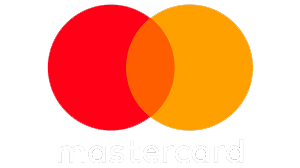MY ACCOUNT
CMYC
c-myc (proto oncogene) (Cat# P2015)
- Species: Human
- Expression Host: E.coli
- Tag: His-tag
- Purity: 95%
- Molecular Weight: 50.4 kDa.
- Gene Accession Number: NM_002467.
Applications
c-Myc has been applied in DNA and protein-protein interaction assays. Unit definition: 1 unit equals 1 nanogram of purified protein.
Formulation and Storage
Protein is stored in 20 mM Tris-Cl (pH 7.5), 20% Glycerol, 100 mM KCl, 1 mM DTT and 0.2 mM EDTA.
Target Gene Sequence
Background
The universal deregulation of c-Myc gene expression in tumor cells suggests that this oncogene represents an attractive target for cancer therapeutic purposes. The c-Myc promoter integrates diverse mitogenic signalling cascades, which are constitutively activated in tumor cells, and translates them into expression of the c-Myc transcription factor, which promotes cell proliferation, growth, differentiation, and apoptosis by regulating the expression of numerous target genes (1-3). The structural and biochemical features of the MYC family (MYC, N-MYC, and L-MYC) mark them as direct regulators of gene expression. As basic helix-loop-helix leucine zipper proteins (bHLH-ZIP), the MYCs acquire the capacity to bind the DNA sequence CACGTG (E-box) when dimerized with MAX (another bHLH-ZIP, 4,5). A head-to-tail pair of MYC-MAX dimers may, in turn, form a heterotetramer capable of bridging distant E-boxes (6). Among the broadly distributed positive enforcers of MYC action that are often recruited to target genes are chromatin remodeling (SWI/SNF relatives) and modifying complexes (TRAPP/GCN5 and relatives); these complexes mobilize nucleosomes and acetylate histones and/or other targets to activate gene expression (4, 7, 8). MYC binds TBP along an auxiliary pathway to control gene expression. MAD and MNT generally oppose MYC action by enlisting histone deacetylase complexes. Besides acting at the level of chromatin, MYC may also operate at later stages of the transcription cycle, after pre-initiation complex formation (9). In addition to using generic chromatin complexes to up- or down-regulate transcription, the MYC network also conscripts individual factors to modify expression locally on an ad hoc basis. For example, YY1, AP2, MIZ1, SP1, BRCA1, and other proteins interact directly with MYC, and so may directly modify the output of the MYC network (10, 11).
SDS-PAGE with Coomassie Blue staining and Western-blot

1. Dang et al., (1999) Exp. Cell Res. 253, 63-77
2. Grandori et al., (2000) Annu. Rev. Cell Dev. Biol. 16, 653-699
3. Eisenman (2001) Genes & Dev. 15, 2023-2030
4. McMahon et al., (2000) Mol. Cell. Biol. 20, 556-562
5. Bouchard et al., (2001) Genes & Dev. 15, 2042-2047
6. Nair and Burley (2003) Cell 112, 193-205
7. Cheng et al., (1999) Nat. Genet. 22, 102-105
8. Luscher (2001) Gene 277, 1-14
9. Eberhardy and Farnham (2001) J. Biol. Chem. 276, 48562-48571
10. Shrivastava et al., (1996) Proc. Natl. Acad. Sci. 93, 10638-10641
11. Sakamuro and Prendergast (1999) Oncogene 18, 2942-2954.
DISCLAIMER
This products is recommended For RESEARCH USE ONLY and is Not qualified for Use in Diagnostic or Therapeutic Procedures.




